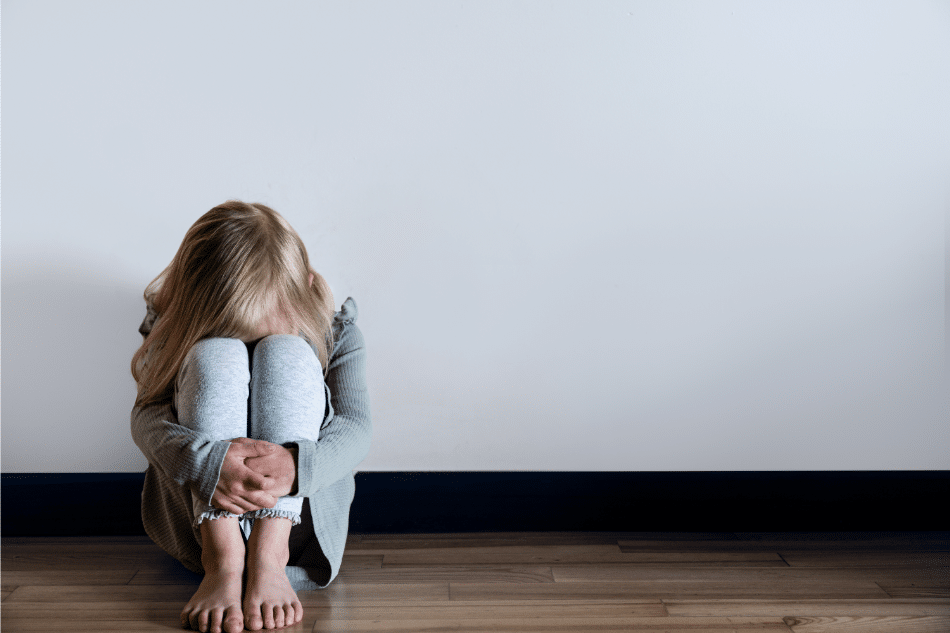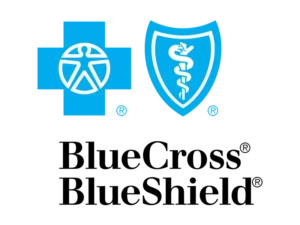TEEN PHYSICAL ABUSE:
SIGNS AND TREATMENT
OPTIONS

Teen physical abuse is when someone purposefully hurts a teenager. Physical abuse is never OK – and it’s also never the person being abuser’s fault. If you or someone you care about is being physically abused, know that support and help are available.
Physical abuse can come from a variety of sources; parents, caregivers, mentors, and romantic partners. Around one in four children experience abuse in their lifetime – with 18% of these children having been abused physically. Also, approximately 8.5% of teenagers in the United States reported experiencing violence in teen romantic relationships.1,2
It’s important to note that these numbers might not truly represent physical abuse in teens; teenagers are often prone to staying silent about their trauma. This means that the number could be higher than what’s currently reported.
Physical abuse in teens can affect emotional, physical, and social development in wide-ranging ways – and these effects can last a lifetime if a teen doesn’t get the help and support they need. If you or someone you care about is being physically abused, understand that healing from physical abuse as a teen is both possible and achievable – especially with the help of professional therapy.
This page can help by explaining:
What physical abuse is
- The signs of physical abuse in teens
- The effects of physical abuse in teens
- Counseling for youth dealing with physical violence options
- When to seek help for physical abuse in teens

What Is Teen Physical Abuse?
According to the American Psychological Association (APA), “Physical abuse is deliberately aggressive or violent behavior by one person toward another that results in bodily injury.” Unfortunately, physical abuse is most often seen in relationships of trust.3 This means that a teenager may experience physical abuse from someone they care about – such as a parent, caregiver, or romantic partner.
Physical abuse can include actions such as:
Slapping, punching, or hitting with objects
- Shaking, pushing, or throwing
- Kicking or stamping on with feet
- Poisoning
- Drowning
- Burning or scalding
- Biting or scratching
Although the effects of physical abuse are sometimes obvious, they can also go beyond visible impacts.
Consider it this way: A house that goes through an extreme storm often experiences obvious damage, such as a leaky roof or cracks in the walls. Yet, there are often unseen effects that aren’t immediately visible – such as water damage and dampness. Physical abuse can be to a teenager what a storm is to a house, damaging them physically and mentally. Except, unlike how a storm passes, physical abuse can feel like it doesn’t end. This means that teen physical abuse requires support and understanding over time to promote healing.
Physical abuse can leave a teen feeling powerless and isolated, potentially leading to a wide range of mental health conditions and physical risks.3 If you suspect that someone you know may be experiencing physical abuse, recognizing the signs of teen physical abuse may help you understand whether help is needed.
The Signs of Physical Abuse in Teenagers
The following may indicate signs of physical abuse in teenagers:4,5
- Unexplainable injuries such as bruises, broken or fractured bones, or burn marks
- Attempts to explain injuries that don’t fit the injury or pattern of injuries
- Injuries to parts of the body that are typically hidden by clothing, such as to the bottom of the feet
- Injuries which reflect the shape of an item used to inflict hurt (for instance, a belt buckle)
- Evidence of scars
- Injuries at different stages of healing
- Withdrawing from physical touch, such as hugs
- Seeming fearful in certain peoples’ presence, such as parents, caregivers, or romantic partners
- Appearing overly watchful or “on guard” towards potential threats
- Needing regular reassurance of what will happen next, for example, by asking “What’s going on?”
- Acting withdrawn or seeming “down”
- Being aggressive without clear reasons as to why
If you notice some of these signs in someone or are concerned for your own safety, reach out to us for support and help at (866) 841-6939.
Effects of PHYSICAL Abuse on Teens
The effects of physical abuse on teens can be wide-ranging and serious – especially if the abuse comes from someone the teen trusts or relies on for safety. As once put by researchers in the area of development, physical abuse “gets under the skin” and impacts a teen’s physical, emotional, social, and behavioral growth.
The length of time abuse goes on and how severe it is can affect outcomes. Having said this, the following are common physical, emotional, and behavioral effects of physical abuse on teens.
Physical Effects of Abuse on Teens7-9
- Physical damage to the body: Physical abuse can escalate. This means that it can cause lifelong problems such as vision and hearing loss, brain injury, or disabilities – or even death.
- Changes to the brain: Physical abuse in teens can affect the areas of the brain that rely most on environmental input. Instead of receiving the message that their environment is safe, the teen is instead given the message of threat – which can affect how their brains develop. This can cause cognitive and emotional damage.
- Constantly aware of threats: A teen who experiences physical abuse may feel constantly in “fight or flight” mode which can lead to feeling “on edge” and fearful.
- Physical ailments: Feeling constantly stuck in “fight or flight” mode can lead to physical complaints such as rapid heartbeat and breathing, stomach aches, headaches, and irritable bowel syndrome (IBS). If the effects of physical abuse aren’t resolved, physical ailments such as these can continue into adulthood and increase the risk of serious medical problems.
Behavioral Symptoms of Physical Abuse in Youth13,14
- Problem behaviors: Physical abuse can increase the risk that teenagers will show problem behaviors, such as risk-taking and aggression toward others. Aggressive behaviors may be caused by difficulties understanding and expressing their emotions, but could also be because aggression and violence have been normalized for them.
- Defiance against authority: Teens who have experienced physical abuse may oppose instructions or requests from authority figures – especially if their physical abuse came from someone in this type of role.
- Over-compliance: Alternatively, they may go above and beyond to follow requests and rules out of fear of punishment.
- Fatigue: A child or teen who has experienced physical abuse may have difficulty sleeping, so might appear frequently exhausted.
- Lack of enjoyment: They may not be able to enjoy activities or social groups they used to. Additionally, changes to the brain may reduce their ability to feel joy in day-to-day life – signaling mental health issues such as depression.
- Not planning for the future: Physical abuse can affect a teen’s ability to learn, set goals, and motivation to plan for the future. They might feel “stuck” in their trauma and only able to focus on survival rather than feeling hopeful about the future.
Emotional Effects of Physical Abuse on Adolescents10-12
- Mental health conditions: Being exposed to physical abuse can lead to mental health conditions such as post-traumatic stress disorder (PTSD), anxiety, depression, and eating disorders.
- Problems controlling emotions: Some teens experiencing physical abuse may outwardly express how they feel through unpredictable outbursts of anger, sadness, or aggression. In contrast, others may not feel safe showing how they feel, so they bottle up their emotions and become withdrawn.
- Low self-image: Teens who experience physical abuse, especially at the hands of someone they trust, may direct their feelings inwards. Therefore, they might feel a lot of guilt and shame – as though they somehow caused the person they trust to treat them in these ways. This can lead to low self-esteem and self-worth.
- Dissociation: To protect themselves from feelings that are too overwhelming to cope with, a teen may start to dissociate from their emotions. This indicates that they have entered “freeze” mode instead of attempting to fight or flee. They may not seem like they have any response to abuse and might come across as “numb.” This may mean that they stop trying to protect themselves from future harm.
- Feeling constantly fearful: In contrast to how some abused teens might dissociate from how they feel, others might feel constant panic and anxiety. This can happen when patterns of abuse are unpredictable. These feelings of constant fear, panic, and anxiety can leave no space for other brain functions, such as learning.
- Damage to relationships: No longer feeling as though people can be trusted, a teen who has experienced physical abuse may withdraw from relationships in general. They might stop trying to make friends, withdraw from family members, and become isolated and lonely.
The emotional, physical, and behavioral effects of physical abuse on teens point toward one clear conclusion: Immediate intervention for abused teens is crucial. If you are concerned about your safety or someone else’s, teen abuse support resources can help.
Counseling for Youth Dealing With Physical Violence
Overcoming physical abuse isn’t easy – but with the right knowledge, support, and professional guidance, it is both possible and achievable. Every teen is unique, therefore so is how they respond to physical trauma. If you’re worried about your own well-being or that of someone else, speaking to a trusted adult and mental or medical health professional can ensure that you get the help you need.
There are many options for counseling for youth dealing with physical violence. A doctor or mental health professional can talk you through the best options for you. These might include:
Trauma-focused cognitive behavioral therapy can help a teen who has been physically abused identify their emotions, better understand them, and challenge any negative self-beliefs resulting from physical abuse. It can also help them develop healthy coping skills.
EMDR therapy for trauma in teens can help them process physical abuse in a safe, supportive environment. It changes the way trauma is stored in the brain, allowing a teen to overcome it and reduce the impact of physical abuse.
Dialectical Behavior Therapy (DBT)
DBT was adapted from CBT for people who struggle with strong or difficult emotions. It can help teenagers who have experienced physical abuse overcome their trauma by teaching them practical ways of managing emotions and stress.
TMS’ non-invasive approach can reduce the symptoms of trauma by rebalancing the brain, promoting a more stable mood and better well-being.
Group Therapy
Group therapy for youth who have been physically abused provides a safe space for teens to express how they feel, process their emotions, and realize that they’re not alone in their experiences.
Additionally, if you or someone you know ever feels like your safety or well-being is under threat, it can help to prepare a safety plan in advance. During times of threat, a safety plan can remind you how to safely manage the situation, remove yourself from it, and what steps to take after you leave.
When to Seek Help for Physical Abuse in Teens
If you’re worried that a teen is being physically abused, the time to seek help is now. A teen’s physical and mental health is at risk when they’re being physically abused, so calling 911 or support lines for advice is advised.
If you or someone you care about has been physically abused and it is impacting your emotional and physical well-being, Mission Prep can help. Our team of trained professionals offers a variety of supportive and nurturing trauma recovery programs for physically abused teens, including:
Residential mental health treatment programs
- Outpatient mental health treatment programs
- Intensive outpatient programs
Reaching out is the first step towards better health. Contact us today for support and guidance.

References
- Brown, C. L., Yilanli, M., & Rabbitt, A. L. (2023). Child physical abuse and neglect. In StatPearls. StatPearls Publishing. Retrieved from https://www.ncbi.nlm.nih.gov/books/NBK493190/
- Clayton, H. B., Kilmer, G., DeGue, S., et al. (2023). Dating violence, sexual violence, and bullying victimization among high school students—Youth Risk Behavior Survey, United States, 2021. MMWR Supplements, 72(Suppl-1), 66–74. https://doi.org/10.15585/mmwr.su7201a8
- American Psychological Association. (n.d.). Physical abuse and violence. APA. https://www.apa.org/topics/physical-abuse-violence
- Mayo Clinic. (n.d.). Child abuse – Symptoms and causes. Mayo Clinic. https://www.mayoclinic.org/diseases-conditions/child-abuse/symptoms-causes/syc-20370864
- New Jersey Department of Children and Families. (n.d.). Child abuse and neglect: Signs and indicators. https://www.nj.gov/dcf/documents/news/publications/Indicators.pdf
- Dichter, M. E., Thomas, K. A., Crits-Christoph, P., Ogden, S. N., & Rhodes, K. V. (2018). Coercive Control in Intimate Partner Violence: Relationship with Women’s Experience of Violence, Use of Violence, and Danger. Psychology of Violence, 8(5), 596. https://doi.org/10.1037/vio0000158
- Moylan, C. A., Herrenkohl, T. I., Sousa, C., Tajima, E. A., Herrenkohl, R. C., & Russo, M. J. (2010). The effects of child abuse and exposure to domestic violence on adolescent internalizing and externalizing behavior problems. In R. A. Lutzker (Ed.), Violence against women and children: Volume 1. Mapping the terrain (pp. 343-365). American Psychological Association. National Center for Biotechnology Information. https://www.ncbi.nlm.nih.gov/books/NBK195987/
- Levit, D. B. (2018). Somatic experiencing: In the realms of trauma and dissociation—What we can do, when what we do, is really not good enough. Psychoanalytic Dialogues, 28(5), 586–601. https://doi.org/10.1080/10481885.2018.1506225
- Nationwide Children’s Hospital. (n.d.). Physical abuse trauma. Nationwide Children’s Hospital. https://www.nationwidechildrens.org/conditions/physical-abuse-trauma
- National Child Traumatic Stress Network. (n.d.). Effects of physical abuse. National Child Traumatic Stress Network. https://www.nctsn.org/what-is-child-trauma/trauma-types/physical-abuse/effects
- Kim, S. G., Weissman, D. G., Sheridan, M. A., & McLaughlin, K. A. (2021). Child abuse and automatic emotion regulation in children and adolescents. Development and Psychopathology, 35(1), 157. https://doi.org/10.1017/S0954579421000663
- Jankowiak, B., Jaskulska, S., Waszyńska, K., Claire, K. D., Bowes, N., Silva, E., Neves, S., & Pyżalski, J. (2021). Will I Like Myself If You Hurt Me? Experiences of Violence and Adolescents’ Self-Esteem. Sustainability, 13(21), 11620. https://doi.org/10.3390/su132111620
- Malinosky-Rummell, R., & Hansen, D. J. (1993). Long-term consequences of childhood physical abuse. Faculty Publications, Department of Psychology, University of Nebraska-Lincoln. https://digitalcommons.unl.edu/cgi/viewcontent.cgi?article=1098&context=psychfacpub
- Flaherty, E. G., Janson, C. J., & McMahon, P. M. (2013). Physical and emotional abuse and neglect of children: A comprehensive review. JAMA Pediatrics, 167(12), 1116-1124. https://doi.org/10.1001/jamapediatrics.2013.1576

















